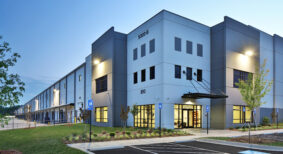Summer-like conditions this past September and now October will contribute to higher rodent activity in the fall season, according to pest management experts who see a lot of action during warmer weather when rodents produce healthier litters than in colder months.
“The more food available and litters born, the more rodents will be seen,” says Alice Sinia, Quality Assurance Manager, Regulatory/Lab Services for Orkin Canada.
Orkin Canada branches in southern Ontario already reported a 20 to 25 per cent increase in rodent calls this past summer. The heightened activity is said to stem from a combination of higher temperatures and the construction season, as sites provide more temporary shelter, food and water.
“Construction also drives rodents out of their natural habitat into the open and to neighbouring homes and buildings,” says Sinia. “Consequently, people see them more. There is also plenty of food available during summer, which can support vibrant rodent populations overlapping in some areas.”
This activity is expected to prolong itself into fall, also because the unseasonably warm weather after August may allow more rodents to survive, reach maturity and reproduce. Parts of Ontario have already seen heat warnings in September, and Environment Canada is predicting a warmer-than-normal October in specific areas.
Once cooler autumn temperatures kick in, more rodents may be scurrying into facilities for shelter.
“Unlike other animals that retain body heat, mice aren’t accustomed to cold weather and will die very quickly,” says Peter Power, president of Power Pest Control. “They have to find ways of getting into buildings to stay warm.”
Rodent Entry Points
Key entry points depend on the facility, but Power suggests facility managers pay attention to sealing pipes that enter a building and checking for any structural issues, such as a crack in the foundation or a gap large enough for a rodent to stick its head through.
Maintenance staff should perform general and thorough inspections of the structure and facility to identify all potential entry points, adds Sinia. Any opening more than one-quarter inch (six to seven millimetres) is big enough for mice and half an inch is big enough for rats. Besides cracks, crevices and pipes, she suggests checking openings in walls voids, holes around utility lines, unscreened vents, ventilator grills, poorly sealed or unsealed exterior doors (door seals) and sidewalk gratings.
Loading dock doors are also popular entry points, says Power, who has noticed oversights when working in commercial facilities. He recommends making sure the overhead dock door and bristles and brush are tight when closed, and ensuring mechanical traps on both sides of the dock door are checked regularly and are clean and in good working order.
“In addition to mechanical traps on the interior, businesses can use exterior bait stations so that mice and other vermin can feed on the poison to help reduce populations around the facility,” says Powers. “Commercial establishments should always have a proactive not reactive pest control plan for integrated pest management, and a technician should be able to understand what they can and cannot do because of certain protocols.”
Get out of the Rat Race
Since rodents are attracted to food, a lesser known source of nourishment is bird seed, says Powers, which is often scattered around bird feeders at homes and even long-term care facilities.
Monitoring and inspecting for rodent activity on a regular basis is crucial, adds Sinia. When it comes to rodent proofing and sanitation, here are some more tips from Orkin:
- Seal all identified holes with appropriate rodent proof-material; for example, use less than one-quarter wire mesh or galvanized wire cloth. Plug holes and screen unused or defective drains.
- Eliminate potential habourage sites by practicing good landscape management. Get rid of dense shrubs, weeds and vegetative coverings around the building, which provides protection and breeding sites for rodents. If possible, maintain at least a 21-inch vegetation-free strip around the building using gravel. This will prevent attraction to the building and burrowing in the foundation.
- For proper garbage management, clean food spills and crumbs promptly and regularly, especially in schools. Eat food only in designated areas to help prevent food littering.
- Use proper garbage receptacles and empty them promptly and regularly to help prevent rodent activity.
- In schools, eliminate clutter in classrooms and storage areas, such as the janitor’s room, cafeteria and dry food storage areas.











If you are going to used Galvanized wire cloth – something like this: http://www.bwire.com/index.html – make sure the holes are small!
I ordered some stuff a year or so back – thought the openings would keep mice out – NO WAY.
Keep in mind, pests can get through even the tiniest of holes – get the smallest holes possible.